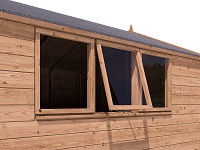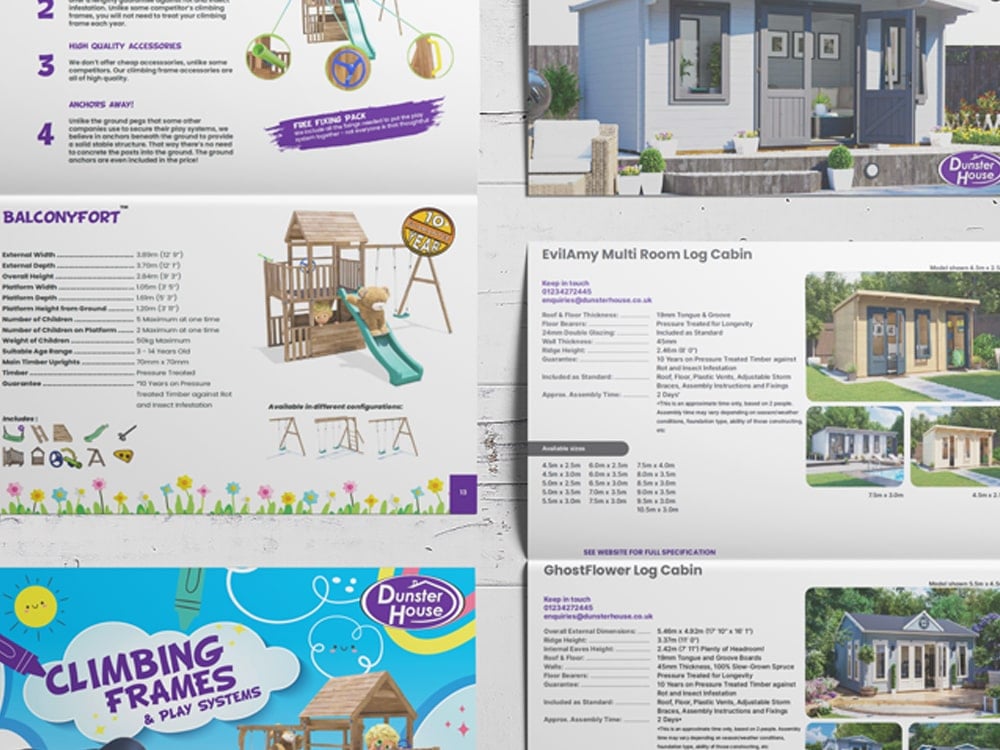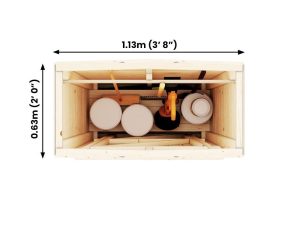Contents
Building the Correct Base
Applying Treatments and Preservatives
Checking Windows and Doors
Adding Gutters and Drainage
Ensuring a Waterproof Shed Roof
Wooden sheds are attractive and practical buildings, but require looking after to maintain their beauty and lifespan. Here is our handy quick answers guide on how to waterproof your shed to help prevent any leakages and keep damp at bay.

It is important that your garden shed is built and cared for in the correct way to ensure it is protected from the elements. It will require good planning from the start, and regular maintenance throughout its life. The last thing you want is for leaks to cause damage to your shed or to its contents.
Follow our tips to help keep your stored belongings safe and dry.
Building the Correct Base

Before attempting to erect your shed, ensure you have enough space for the footprint of the building, as well as room for any overhangs, and space to carry out maintenance work, and for air flow round the sides. Adequate airflow around the building will help keep it dry and damp free.
The first thing you will need to do is lay down a solid base for your shed to be placed on. The foundations are one of the most important things to get right, as they will give your shed a stable and level surface. The base can be made from concrete, paving slabs, decking etc. These types of base are better than erecting directly onto a lawn. This is because grass soaks up moisture and can become saturated and waterlogged.
The addition of wooden floor bearers for your shed to sit on will lift it from being in direct contact with the cold damp ground. The spaces between the bearers allow good circulation of air underneath.
The bearers should be made from pressure treated timber, to provide protection against rot and insect infestation. Pressure treating means preservative is forced deep into the timber to give full protection all the way through, rather than just being coated on the exterior surface. Untreated wood would quickly deteriorate in cold and wet conditions, and leave your shed vulnerable.
All Dunster House garden buildings come with pressure treated bearers included in the price, to ensure you have the best protection possible.
Applying Treatments and Preservatives
The majority of Dunster House garden sheds are made from pressure treated timber to be long lasting and low maintenance. However, you will still need to apply a good quality water repellent to give added longevity. You should do everything you possibly can to help prolong the life of your shed and keep the timber in the best condition. Fully protecting your shed is worth it for the end results.

Pressure treated timber comes with a 10 year guarantee against damage from insects and fungal decay. The treatment is highly effective in keeping the structure strong, but will need topping up over time to keep the wood in optimum condition.
An untreated wooden shed will need to be painted with a wood preservative straight away, and regularly thereafter, to maintain it. There are many different options when it comes to wood treatments, so be sure to choose one of high quality. Spirit based stains are said to be thinner and easier to apply, but dry slowly, and are more toxic. Water based stains are thought to be quicker drying and contain fewer chemicals.
Checking Windows and Doors

Maintaining a waterproof shed takes work, but is worth it to prevent water ingress. Regular attention is required to keep wooden window and door frames in good condition.
The natural properties of timber mean that it reacts to the elements so will change and move over time. Expansion and contraction of the timber can cause cracks and chinks to open up. This is why you should perform regular checks to ensure there are no gaps for water to penetrate through. If you do notice anything, it can be easily fixed by filling with expanding foam, builder’s caulk or thin strips of wood.
Doors with a threshold will help prevent rain from blowing in from underneath. Any gaps around doors can be fitted with draft excluder tape, or sealed at the bottom by fitting a weather bar.
Window sills, frames and external doors should all be checked for signs of rot. If you discover any soft patches, they should be dug out and refilled with a good quality wood filler. The area can then be sanded down and repainted with preservative and water repellent as necessary.
Adding Gutters and Drainage
One of the key factors in creating a waterproof shed is making sure you have an adequate drainage system. Installing guttering is a good way of controlling the rainwater that runs off your shed roof, and allows it to be collected and reused. It makes it easier to direct water away, and has the added benefit of being environmentally friendly. Storing excess rainwater in a butt provides you with a way to water your garden that saves resources and money.


Be sure to regularly check that gutters and pipes are clear from leaves and debris, and free from any blockages. A blocked drainage system could cause a build up of excess water or pooling on the roof.
If you have poor drainage around your shed, it could pose a problem. Wet ground and standing water will make it difficult to provide a waterproof environment and prevent damp.
An easy way to provide drainage is by digging a trench along the outside of your shed wall, and filling it with hardcore and chippings. This allows water runoff from the roof to drain into the hole rather than build up. The water is contained by the rubble, rather than soggy soil, so drains away and evaporates quicker.
Ensuring a Waterproof Shed Roof
To protect your building from the elements and complete the finishing touch to waterproof the shed, the roof will need to be covered. The most common roofing material for a shed is felt.
As an external building, your shed will be subject to weathering which will cause the roof felt to deteriorate over time. Regular checks are essential to assess the levels of damage and wear over the years. Particular attention should be paid to the ridge line and the edges of the roof. Places where the material is nailed down could also become weak and vulnerable spots.
You can easily patch up areas of felt using some spare pieces of the material and sealant or glue. If damages are not easily repaired or too severe, it may be best to replace the entire roof covering with new felt. A fresh roof covering will ensure your shed continues to last and do its job effectively.
Waterproofing will keep your wooden shed in good condition and ensure your tools and equipment stay protected. Ensuring you take the time to fully waterproof the shed and perform any regular maintenance will help the building last longer. You should act as early as you can to minimise the chance of any preventable deterioration.








